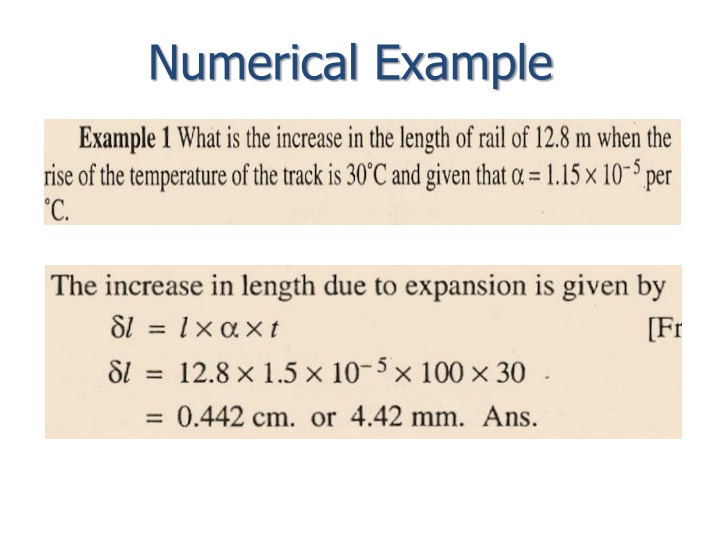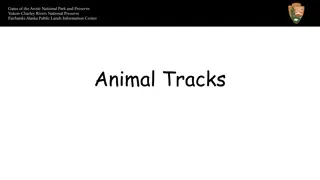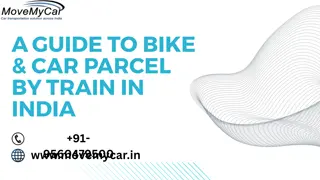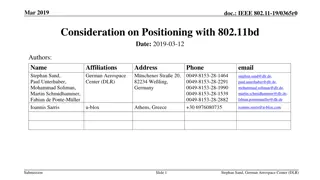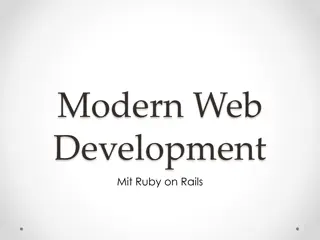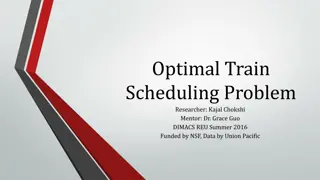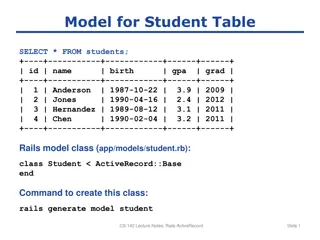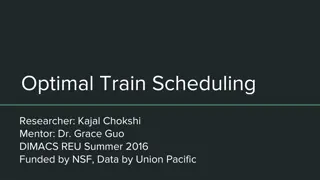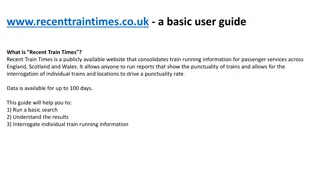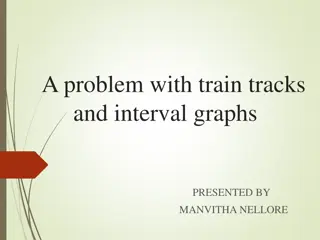Creep of Rails in Train Tracks
Creep of rails refers to the longitudinal movement of rails due to various factors like wave action, percussion action, dragging theory, and train movement. This movement can lead to track instability if not properly managed. Understanding the causes and effects of rail creep is crucial for maintaining safe and durable railway infrastructure.
Uploaded on Feb 15, 2025 | 0 Views
Download Presentation

Please find below an Image/Link to download the presentation.
The content on the website is provided AS IS for your information and personal use only. It may not be sold, licensed, or shared on other websites without obtaining consent from the author.If you encounter any issues during the download, it is possible that the publisher has removed the file from their server.
You are allowed to download the files provided on this website for personal or commercial use, subject to the condition that they are used lawfully. All files are the property of their respective owners.
The content on the website is provided AS IS for your information and personal use only. It may not be sold, licensed, or shared on other websites without obtaining consent from the author.
E N D
Presentation Transcript
Numerical Example What should be the length of track to overcome temperature stress if rise in temperature t = 30 C Assume 700 kg as resistance to track movement. Given: A= 60 cm2, ? ? = 1.15 x 10-5 per, C and E = 21.5 x 105 kg/ cm2
Creep of Rails Creep of Rails is defined as the longitudinal movement of rails with respect to sleepers in a track. Why Creep Takes Place? There are mainly six causes (mechanisms) behind creep defect: o Wave action. o Percussion action. o Drag action. o Starting, accelerating, slowing, or stopping of a train. o Expansion or contraction of rails due temperature. o Unbalanced traffic.
Wave Action Train Movement According to the wave theory, the rail creep is caused due to formation of the crest curve ABC ahead of the wheels, as the result of deflection under load. The wheels push the rails in the direction of train movement, causing creep. The rear crest gets back to its normal position. Reducing wave action will reduce creep. This can be achieved by increasing the track stiffness: Use ballast with good interlock (angular in shape). Larger rail section. Closer sleeper stiffness.
Percussion Action Creep occurs due to impact load (R) of wheels at the rail end at joints. Horizontal component of the load (P) pushes rails in the direction of train movement, causing creep. Next wheel will do the same (cumulative creep effect)
Dragging Theory Wheels of moving locomotive tends to push rails backward, while moving railcars pushes rails forward (due to wave action). http://interfacejournal.com/wp-content/uploads/2014/05/ryan1.jpg Rail cars Wave action effect Greater than the Locomotive Drag effect
Starting, Accelerating, Slowing or Stopping train Train Movement When train starts its journey, the wheels pushes the rail backward [direction of creep is backward]. Direction of Creep Starting Train Train Movement When brakes are applied at the end of the journey, wheels of the rail cars tend to push the rail track in forward direction [direction of creep is forward]. Direction of Creep Stopping Train Pictures adapted from: http://www.studylecturenotes.com/ engineering/transportation-engineering/161-what-is-creep
Expansion or Contraction of Rails Due to Temperature Change Increase of temperature Rails creep both sides Decrease of temperature KSA environmental conditions! Class discussion
Unbalanced Track http://thumbs.dreamstime.com/z/unbalanced-concept-depicted-help-seesaw-having-golden-silver-ball-35974043.jpg In a single line system if heavy equal traffic (load magnitude and repetition) runs both direction, the creep will be balanced. BUT if train runs full in one direction and empty when back, the creep is unbalanced. How it works if double track system was the case?
